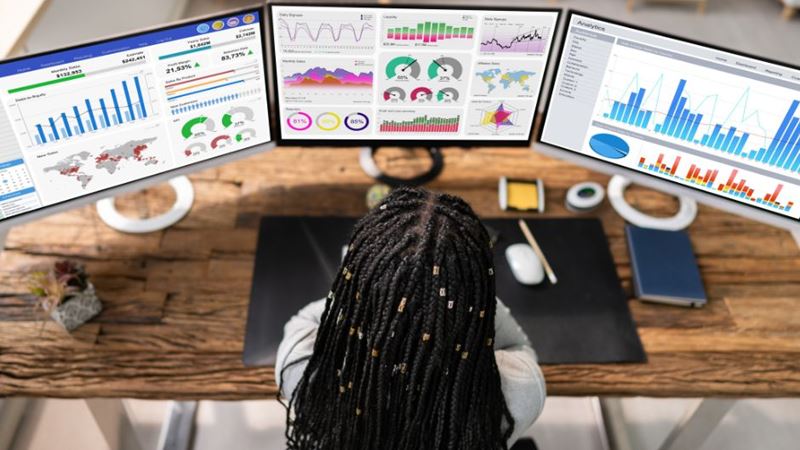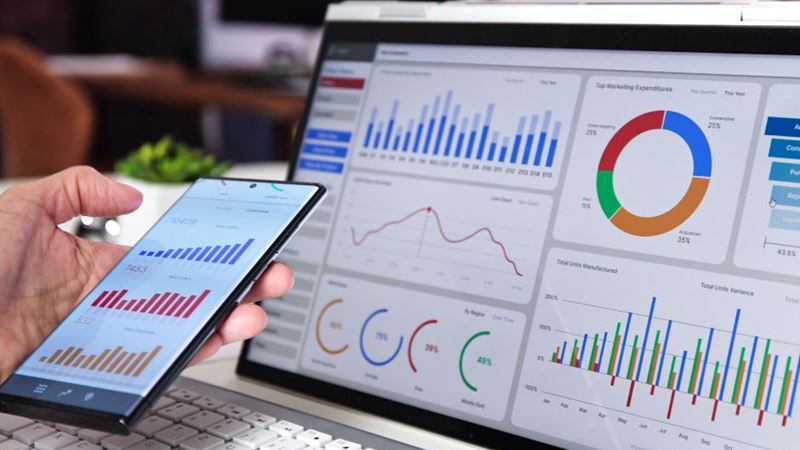Learning snapshot
Numbers with meaning: making online metrics work for you
Online analytics can feel overwhelming, but you don’t need to track everything, only what matters to your organisation. By choosing the right tools and focusing on meaningful information, digital data can become a powerful part of your impact story.
13 November 2025

If you’ve ever logged into the analytics dashboard of a website or social media account, you’ll know the feeling: numbers everywhere. Page views, bounce rates, impressions, likes, clicks, shares, conversions. It’s a flood of data that can feel less like clarity and more like standing in front of a café menu that goes on for six pages.
At a certain point, you stop looking and just order a flat white.
The same thing happens with online metrics. Many not-for-profit organisations end up latching onto the easiest number to find - usually “followers” or “views” - because it’s right there on the screen. But these numbers don’t always mean much. They might look good, but do they tell you anything about the impact of your work? Not necessarily.
This is where the real work of using digital data begins: moving past vanity statistics and finding the handful of numbers that actually connect to your mission.
The problem with “vanity metrics”
Let’s take an example.
Imagine your organisation runs a campaign to encourage young people to volunteer. At the end of the campaign, you proudly announce that your social media posts had 50,000 views or impressions. That sounds impressive. But did any of those young people sign up? Did they attend an induction? Did they stick around as active volunteers six months later?
Without those answers, the “50,000” is just noise. It tells you about visibility, but not about outcomes. That’s why these sorts of statistics are often called “vanity metrics.” They make us feel good, but they don’t necessarily help us make decisions or show impact.
Why online metrics matter at all
So, should we ignore digital data altogether?
Not at all. The internet is where most people now encounter organisations for the first time. Whether it’s a parent searching for after-school activities, a donor looking for a cause to support, or a community member curious about local events, the journey often begins online.
If you can make sense of your online metrics, you can answer some very practical questions:
- Are we reaching the people we want to reach?
- Are they engaging with us in meaningful ways?
- Are digital interactions leading to real-world outcomes?
Those answers help you refine your communications, prove your reach to funders, and understand how your organisation connects with the world beyond the numbers.

Making the numbers work for you
The key is to flip the perspective. Instead of starting with the data and asking, “what does this mean?”, start with your mission and ask, “what do we need to know?”.
Say your goal is to increase attendance at community workshops. Then the numbers you care about aren’t just “likes” on an event post, but click-throughs to the registration page, actual sign-ups, and ultimately the number of people who walk through the door. If your mission is about supporting isolated seniors, you’ll be less interested in how many people in general saw a Facebook post and more interested in how many seniors signed up for a phone check-in.
When you align metrics with goals, the data suddenly becomes less overwhelming. You stop trying to track everything and focus on what’s meaningful.
Choosing the right tools
You don’t need to be a digital wizard to get started. Most platforms already provide analytics: Facebook and Instagram have built-in insights, email platforms like Mailchimp or Campaign Monitor show open and click rates, and Google Analytics gives detailed information about website traffic.
If you’re worried about where your data is stored, privacy or complexity, there are also simpler alternatives like Plausible or Matomo, which focus on key metrics without collecting unnecessary personal data.
The trick is not to drown in options. Decide what you want to measure, then pick the tools that give you that information clearly and consistently.
Making sense of engagement
Engagement is one of the most slippery words in digital measurement.
A “like” is technically an engagement, but it’s a very shallow one. What really matters is whether people are taking the next step. Did they comment? Did they share the post with friends? Did they follow a link and sign up for something?
The deeper the engagement, the closer you get to outcomes. Imagine a pyramid: at the base are all the people who see your content. A smaller number will click or like. Fewer still will sign up, donate, or attend an event. The higher you move up that pyramid, the closer you get to demonstrating actual change.
Using data to tell stories
Numbers alone can be dry, but when you put them in context, they come alive. If your online sign-ups doubled after you started posting video stories from participants, that’s a useful insight. If you notice a spike in event registrations after sending newsletters on Tuesdays, it shows that this timing encourages readers to act.
The Community Impact Hub stands as a good example of this. We can directly observe that visitors who use the Community Impact Planner tools spend a significant amount more time on the site than those who don’t. This demonstrates that the tools are being used for their intended purpose. That insight helped us make the decision to shift our focus toward capability development for our grants community.
This is what makes metrics powerful: not the raw numbers, but the patterns they demonstrate and the decisions they support.
Making it manageable
One reason many not-for-profits shy away from digital measurement is that it feels endless and onerous. And it can be. There’s always another metric you could track. The trick is to be realistic about your capacity to monitor and measure. Pick three to five key indicators that align with your mission and check them at practical intervals.
You don’t need to check your metrics every day. For many organisations, monthly or quarterly reviews are enough to see the impact of your activities. Tie those reviews to real-world milestones: after a campaign, after an event, or before a board meeting. That way, the data becomes a purposeful part of your regular rhythm, not an overwhelming extra task.

Bringing metrics into your evidence base
Funders are increasingly interested in digital reach, but what impresses them isn’t just “big numbers.” What stands out is when you can connect online activity to offline outcomes. Instead of saying “our posts reached 20,000 people,” you can say “our posts led to 150 sign-ups, and 120 people actually attended our event.”
That kind of story shows not just activity, but impact. It demonstrates that you know how to use digital tools strategically, and that you’re paying attention to the link between communication and outcomes.
Conclusion
Online metrics don’t have to be overwhelming or superficial. When you cut through the noise and focus on the numbers that connect to your mission, they can become a powerful part of your evidence toolkit.
Think of them as signposts rather than scoreboards. They point you towards understanding who you’re reaching, how they’re engaging, and whether your digital work is leading to real-world change.
And once you see them that way, the café menu of analytics suddenly looks a lot less intimidating. You don’t need to try everything on the list. You just need to know what you’re hungry for.
Learn about wellbeing
Understand how your community is going to help you to better target and plan your project.
Ready to plan your project?
Understand your vision, plan your impact and report on the outcomes of your project with three easy interactive tools in the Community Impact Planner.
Acknowledgement of Country
The Western Australian Community Impact Hub acknowledges and pays respect to the Traditional Owners of the land on which we are based, the Whadjuk people of the Noongar Nation and extends that respect to all the Traditional Owners and Elders of this country. We recognise the significant importance of their cultural heritage, values and beliefs and how these contribute to the positive health and wellbeing of the whole community.
